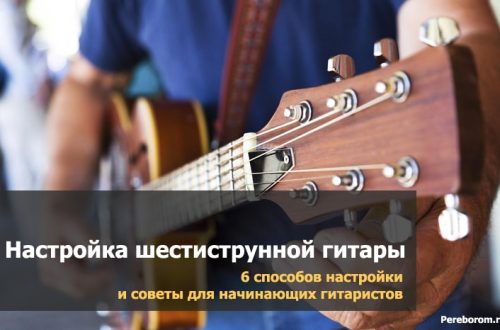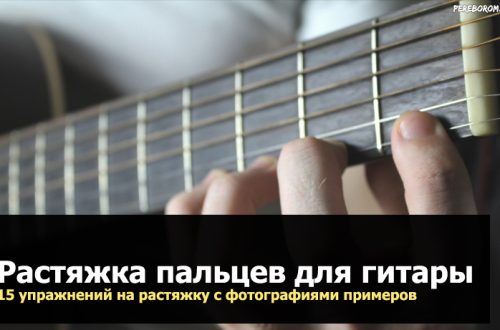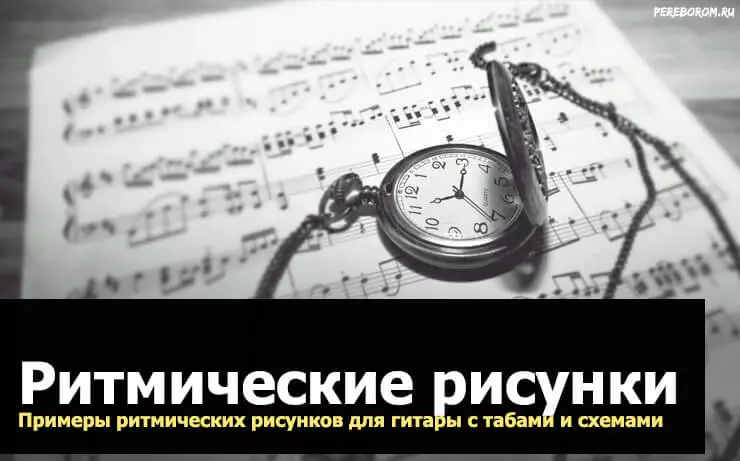
Rhythmic drawings. Examples of rhythmic patterns for guitar with tabs and diagrams
Contents

Rhythmic drawings. general information
Rhythmic drawings – one of the key foundations of any music, and not only the drummer, but also other musicians should know them. It is on them that the structure of the composition is built, and it is to them that all the instruments within it are subordinated. In this article, we will consider in detail the main types of guitar rhythmic patterns, and other aspects of rhythm within the composition.
Basic elements and techniques
To begin with, it is worth talking about the basic concepts associated with rhythmic patterns in music.
Tempo and metronome
Tempo refers to the speed of a composition. It is measured in beats per minute, and the higher this figure, the faster the song will sound. The pace is considered metronome – a device that counts each beat at an ideal interval. If the whole ensemble plays with a different tempo, then the composition will fall apart and will not sound. However, if the instrument plays exactly twice as slow, then it will still be inside the song, just the notes it plays will be twice as long as the others.
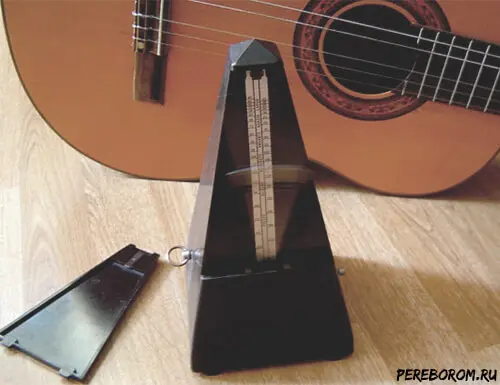
Pulsation
Pulsation determines how accents and beats are placed within the rhythmic pattern. Compliance with the pulsation is very important for all instruments, otherwise it will turn out to be a mess where everyone plays at random. The pulsation is set by the rhythm section – the drummer and bassist, and is kept by them. In addition, pulsation can be called a groove.
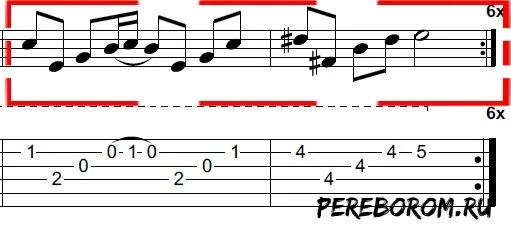
Tact
A segment of a musical composition that begins with a strong beat and ends with a weak beat, and is also completely filled with notes of a certain length. As a rule, within one bar there is one musical phrase or one element of a rhythmic pattern.
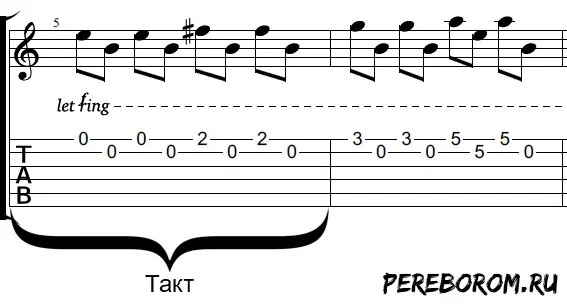
Note length
How long one note lasts within a bar. The length of the notes determines the tempo of the composition, as well as the pulsation. The length of a note also indicates how many of them can be inside one bar at the selected time signature. For example, standard 4/4s mean that they can have four quarter notes, two half notes, and one full note, or eight eighth notes, sixteen sixteenth notes, and so on. Note length is very important if you want to make a rhythmic pattern.
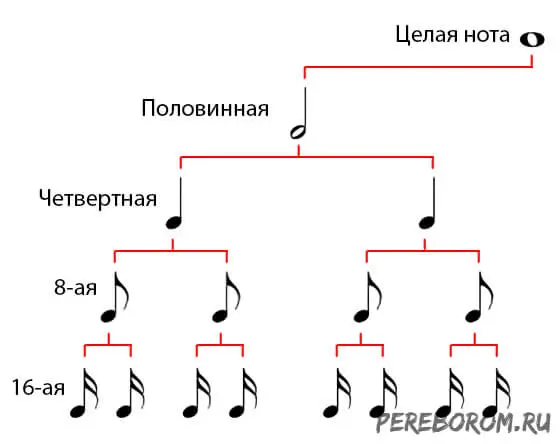
“Reference points” of measures. All musicians are guided by them. As a rule, a strong beat is indicated by a kick of a bass drum, or a louder beat of a metronome, and a weak beat by a snare drum. It is very important to hit the beat, because in this way the instruments begin to emphasize each other, and the composition does not fall apart.

Time signatures
Time signature indicates how many notes of a certain length should be played within one beat and bar. It consists of two numbers: the first indicates the number of beats, the second – the length of the notes. For example, the 4/4 time signature indicates that the measure contains four beats, a quarter long. Thus, each note sounds exactly in a certain beat. If we increase the time signature to 8/8, then the tempo will double. As a rule, the sizes are counted, relying on the sound of a metronome.
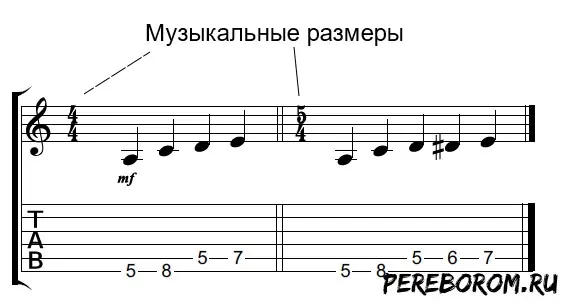
Syncopation
Syncopation is an unusual rhythmic device. Using it, musicians shift the strong beat to the weak beat. Thanks to this, interesting and unusual rhythmic patterns are formed, as well as a unique pulsation.

Types of rhythmic patterns
It is worth saying that rhythmic patterns, as well as guitar fights, there are many. However, there are certain standards that are worth learning. before coming up with something of your own.
Standard
All classics fit into this category. guitar rhythms – “six”, “eight”, and so on. As a rule, standard drawings go flush with the metronome and beats, without shifting or interacting with them in any way. In addition, waltz rhythms, which are considered as “ONE-two-three”, are also suitable here.
Shuffle
This rhythmic pattern came from the blues. It is usually played in 4/4 time signature, triplet pulse and eighth notes. That is, for one beat of the metronome, you must play a note or chord three times. However, in the shuffle, every second note of the triplet pulsation seems to be skipped. Because of this, an interesting rhythm arises – instead of “one-two-three” you play “one-pause-two-three”. This is the shuffle.

Swing
A rhythmic pattern that came from jazz. At its core, it resembles a shuffle, since it is also based on one missing note in triplet pulsation, however, during swing play, the beats shift. In this way, an interesting and unusual pulsation is achieved. In the countdown, you can rely on the fact that the missing note is denoted as “and”. You should get – “One – and -Two-three (quickly) – and – Two-three – and – Two-three – and – One – and …” and so on.
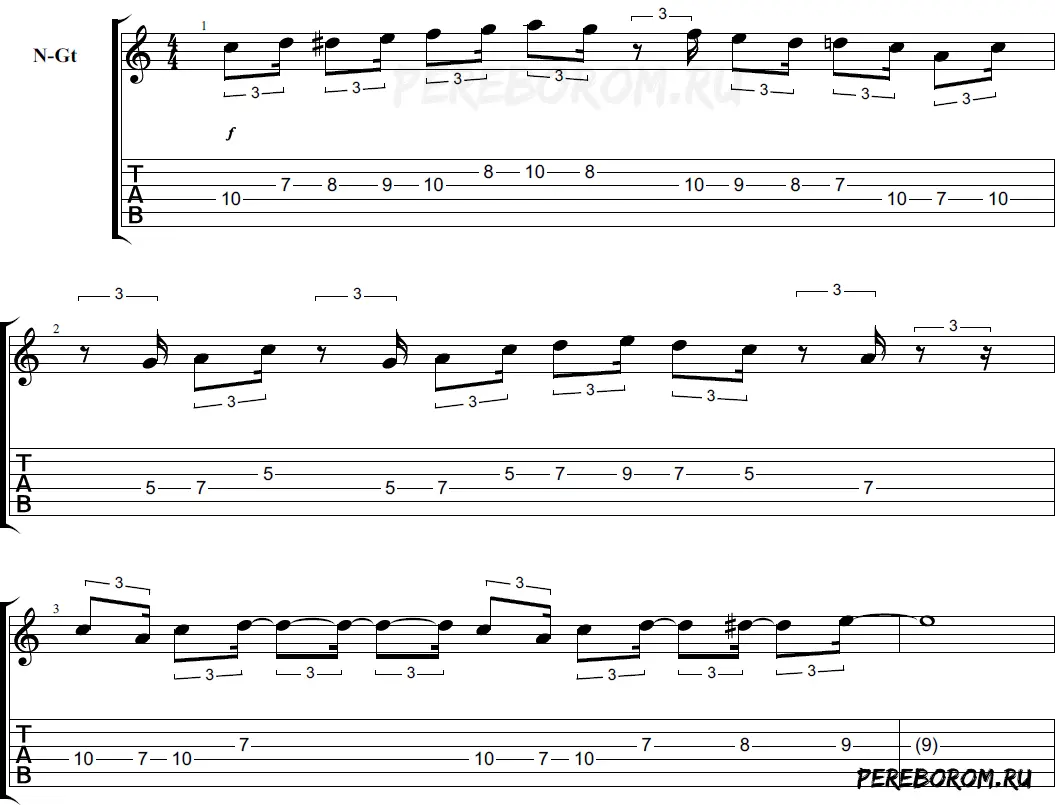
Reggae and ska
These two rhythms are very similar. Their essence lies in the fact that the accents of each share are shifted. Instead of the first strong beat, you play a weak one, instead of the second weak beat, you play a strong one with an accent. When playing with a fight, it is very important that the first blow is always, as it were, muffled, and the second stroke goes up.

Gallop
Rhythmic pattern characteristic of metal and hard rock. Its essence lies in a very fast game inside the triplet pulsation, which will look like “One – one-two-three – one-two-three” and so on. The example is played with an alternating stroke.
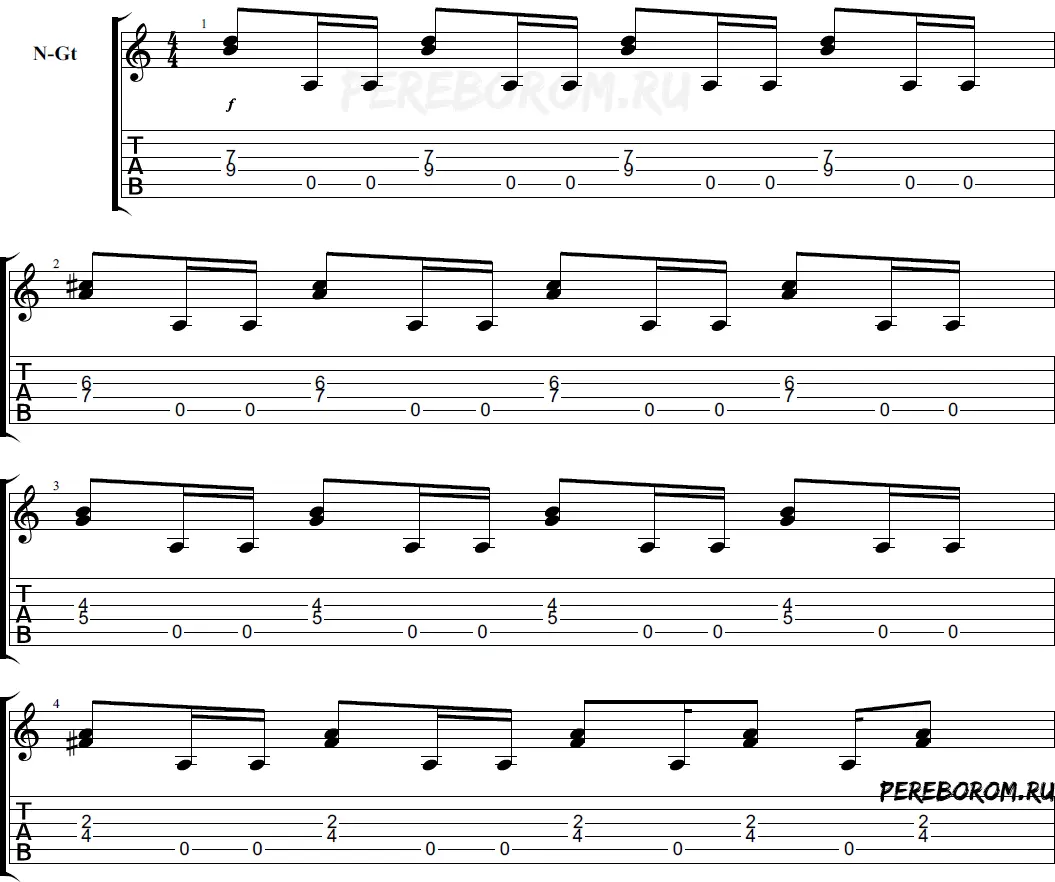
Polyrhythmia
Not so much a technique as a tool for a more interesting arrangement and guitar accompaniment.
Polyrhythmia – This is the use of two musical sizes simultaneously within one measure of the composition. If we represent the standard 4/4 time signature as a line, we get:
| _ | _ | _ |
Where each character | is the beat on which the drum or note falls. So there are four beats in 4/4. If we take another number of beats that is not divisible by 4, say 3, and represent it in exactly the same way, we get:
| _ | _ | _
And now let’s combine it with 4/4. Get:
| _ | _ | _ |_
| | |
That is, rhythmically it will sound like “One – pause – One-Two-Three – One – Two – pause …”.
In writing, polyrhythm is denoted by a colon. In this case it is 4 : 3, but there may be others.
This is polyrhythm. This can be applied, for example, in the drums and bass part, when the drummer beats one number of beats with one hand, and creates a polyrhythm with the drummer with his foot or other hand.
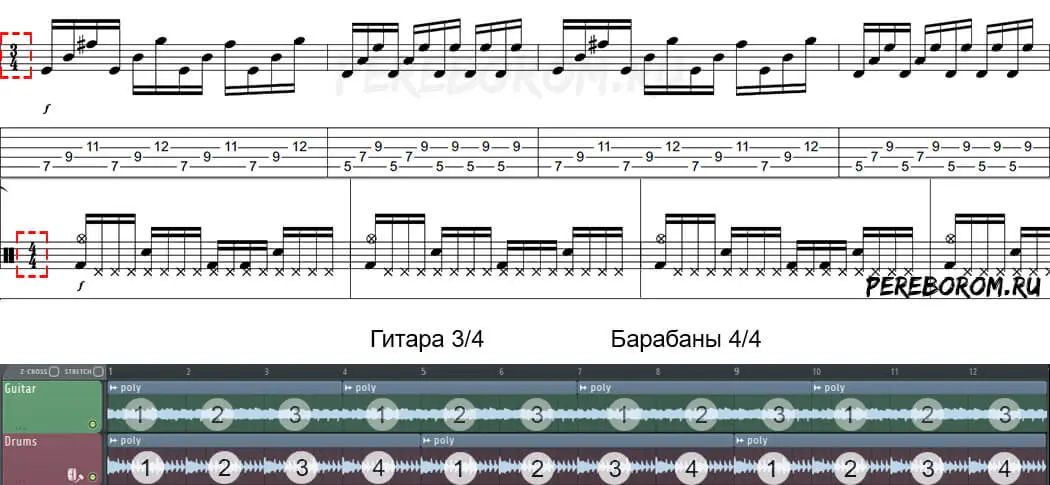
Playing with pull and lead
In addition, it is very important for musicians to understand how to play with the so-called pull and lead. Everything is very simple – when playing under a metronome or drums, you do not need to hit the beat clearly, but a little, literally a fraction of a second late, that is, delaying the beat, or accelerating, that is, ahead of the metronome. It’s very difficult if you can’t play smoothly, but by practicing with a metronome and a sense of rhythm, you’ll learn how to do it. This way of playing is necessary in some genres of music, as it swings the overall groove a lot, making it smoother and more relaxed.
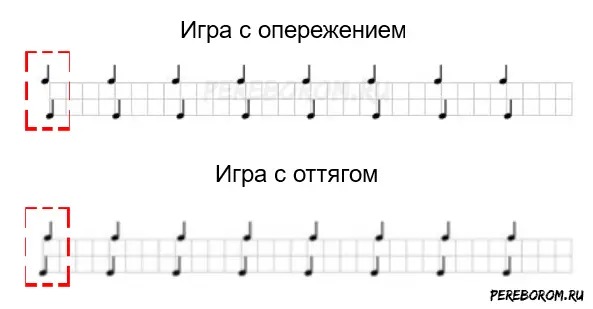
See also: How to pick up a guitar fight
Examples of rhythmic patterns

Below are compositions with examples of rhythmic patterns, which will help you better understand how to play each of them.
Shaffle
- Queens of the Stone Age – Mosquito Song
- The Raconteurs – Old Enough
- KISS – Let me Go, Rock-n-Roll
- Devo — Mongoloid
Swing
- Glenn Miller – In the Mood
- Louis Armstrong – Mack The knife
- Billie Holiday — Summertime
Reggae and ska
- Bob Marley – No, Woman No Cry
- The Wailers – Get Up Stand up
- Leprechauns – Hali-gali
- Zero Talent – White Nights
Gallop
- Aria – Asphalt Hero
- Metallica – Motorbreath
- Iron Maiden – The Trooper
- Nightwish — Moondance
Polyrhythmia
- King crimson – Frame By frame – both guitar parts are in different time signatures: the first in 13/8, the second in 7/8. They diverge, but gradually catch up with each other.
- Queen – The March of the Black Queen – 8/8 and 12/8 polyrhythms
- Nine inch Nails – La Mer – piano playing in 3/4, drums in 4/4
- Megadeth – Sleepwaler – polyrhythm 2 : 3.
Conclusion
Any musician should know at least standard rhythmic patterns, as well as understand time signatures and hear beats. This will help to come up with compositions that do not sound monotonous, as well as create the right mood for the song and a characteristic groove. By combining rhythmic patterns, you open up endless possibilities for composing and creating songs, both solo and in an ensemble.



